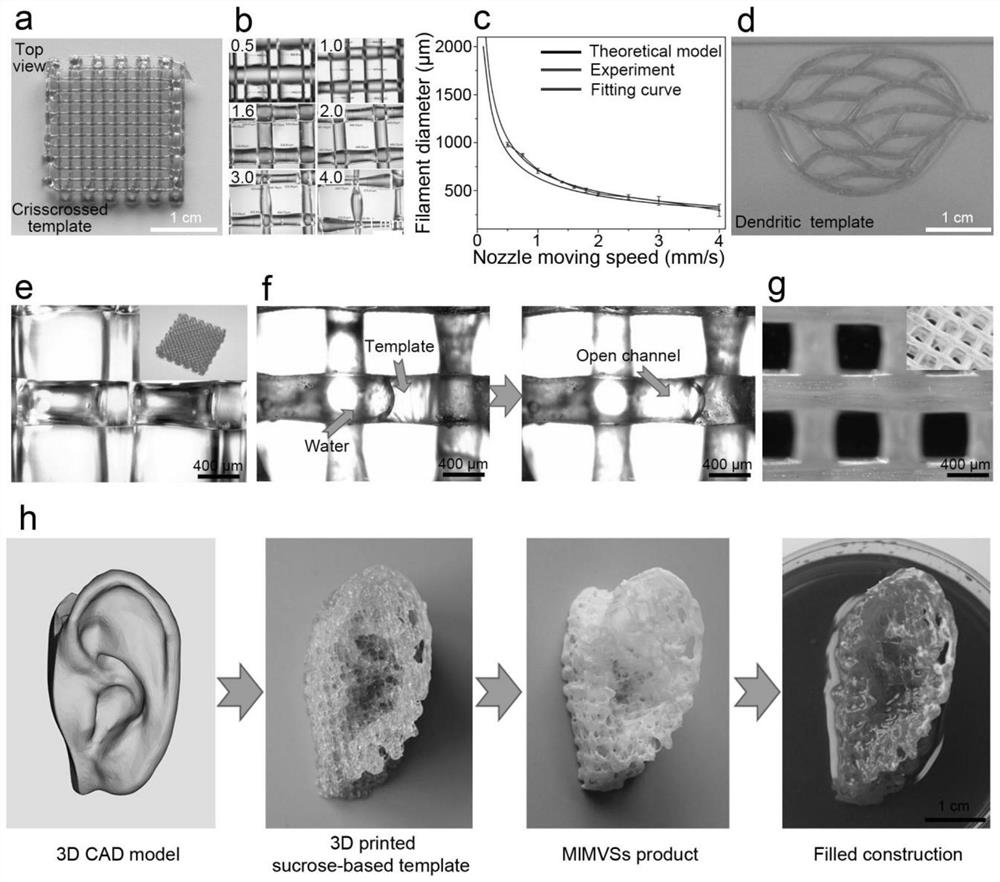Preparation method of a bionic vascular network tissue engineering scaffold with multi-level structure
A bionic blood vessel and network tissue technology, which is applied in the fields of medical formula, medical science, prosthesis, etc., can solve the problems of ineffective performance of blood vessel function, easy deformation and blockage, poor mechanical properties, etc., and achieve good scalability, maintenance of survival and Effect of growth, good elasticity
- Summary
- Abstract
- Description
- Claims
- Application Information
AI Technical Summary
Problems solved by technology
Method used
Image
Examples
Embodiment 1
[0046] (1) 3D printing "sacrificable" sugar template
[0047] ①Model building: use CAD software to construct a model of a cubic network structure, the size is 20mm×20mm, the network gap is designed to be 1.2mm, the intersection angle is 45°, and the design path simulates the path of the nozzle of the 3D printer;
[0048] ②Set printer parameters: Fill the heating chamber of the 3D printer with sucrose powder, set the temperature of the heating chamber to 150°C, the temperature of the nozzle to 135°C, and the heating time to 70 minutes.
[0049] ③Set 3D printing software parameters: layer height is 0.5mm, part position is X-axis 100, Y-axis 100, filling type is 90°, XY-axis movement speed is 1.2mm / s, T2-axis extrusion speed is 0.005mm / s , to get the sugar template.
[0050] (2) Preparation of three-dimensional hollow scaffolds
[0051] ① Preparation of solution: Weigh 0.4g of PCL solid and dissolve it in 10ml of THF, stir magnetically at room temperature for 2 hours to form a ...
PUM
| Property | Measurement | Unit |
|---|---|---|
| diameter | aaaaa | aaaaa |
| thickness | aaaaa | aaaaa |
| density | aaaaa | aaaaa |
Abstract
Description
Claims
Application Information
 Login to View More
Login to View More - R&D
- Intellectual Property
- Life Sciences
- Materials
- Tech Scout
- Unparalleled Data Quality
- Higher Quality Content
- 60% Fewer Hallucinations
Browse by: Latest US Patents, China's latest patents, Technical Efficacy Thesaurus, Application Domain, Technology Topic, Popular Technical Reports.
© 2025 PatSnap. All rights reserved.Legal|Privacy policy|Modern Slavery Act Transparency Statement|Sitemap|About US| Contact US: help@patsnap.com



